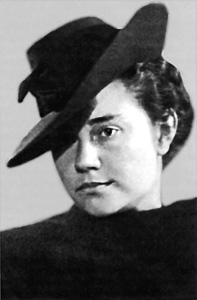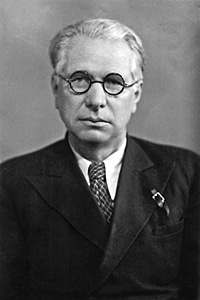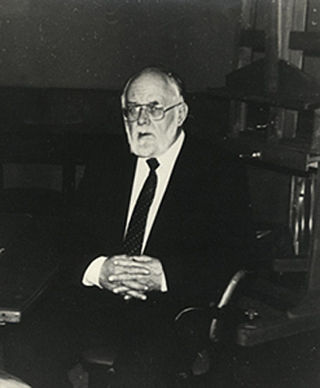
Nikolai Matveevich Pozdneev was a Soviet Russian painter, living and working in Leningrad, a member of the Leningrad Union of Artists, representative of the Leningrad School of Painting, most known for his genre and still life paintings.

Nikolai Nikolaevich Baskakov was a Soviet painter, a member of the Saint Petersburg Union of Artists, who lived and worked in Leningrad, regarded as one of the leading representatives of the Leningrad school of painting, most famous for his genre and portrait painting.

Evgenia Petrovna Antipova was a Russian painter, graphic artist, and art teacher. She was known for her genre compositions, portraits, landscapes, and still life paintings, which she created using oils and watercolours. Among her favourite themes were apple orchards and Crimean landscapes.

Rudolf Rudolfovich Frentz was a Soviet and Russian painter, watercolorist, graphic artist, illustrator and art teacher who lived and worked in Leningrad. He was a member of the Leningrad Union of Artists and one of the founders of the Leningrad school of painting, most famous for his battle and monumental painting.

The Leningrad School of Painting is a phenomenon that refers to a large group of painters who developed in Leningrad around the reformed Academy of Arts in 1930–1950 and was united by the Leningrad Union of Soviet Artists (1932–1991).
Nikolai Nikolaevich Brandt was a Soviet Russian painter and stage decorator. He lived and worked in Leningrad. He was a member of the Leningrad Union of Artists and is regarded as a representative of the Leningrad school of painting, known for his landscape paintings.
The year 1972 was marked by many events that left an imprint on the history of Soviet and Russian Fine Arts.
The year 1985 was marked by many events that left an imprint on the history of Soviet and Russian Fine Arts.
The year 1984 was marked by many events that left an imprint on the history of Soviet and Russian Fine Arts.
The year 1976 was marked by many events that left an imprint on the history of Soviet and Russian Fine Arts.
Alexander Dmitrievich Zaytsev was a Russian and Soviet painter and art educator, who lived and worked in Leningrad. He was a member of the Leningrad Union of Artists, and professor of painting of the Repin Institute of Arts, who played an important role in the formation of the Leningrad school of painting.
Genrikh Vasilievich Pavlovsky was a Russian and Soviet painter and art educator, who lived and worked in Leningrad, a member of the Leningrad Union of Artists, who played an important role in the formation of the Leningrad school of painting.

Andrei Andreevich Mylnikov was a Russian and Soviet painter and art educator, People's Artist of the Russian Federation, Stalin Prize winner, and Lenin Prize winner, who lived and worked in Saint Petersburg. He was a member of the Saint Petersburg Union of Artists, and professor of painting of the Repin Institute of Arts, regarded as one of the brightest representatives of the Soviet art, who played an important role in the formation of the Leningrad school of painting.

Kim Nikolaevich Slavin was a Soviet Russian painter, a member of the Leningrad Union of Artists, who lived and worked in Leningrad. Kim Slavin regarded as one of representatives of the Leningrad school of painting, most famous for his landscape paintings. For over forty years, Slavin kept a detailed diary, which was published after his death by his wife, Nina Slavina, a famous painter on porcelain.
Victor Ivanovich Korovin was a Soviet Russian painter, a member of the Leningrad Union of Artists, who lived and worked in Leningrad. Victor Korovin regarded as one of representatives of the Leningrad school of painting, most famous for his landscape paintings. Died in an accident.

Yaroslav Sergeevich Nikolaev was a Soviet Russian painter, Honored Art worker of Russian Federation (1956), People's Artist of the Russian Federation (1975), a member of the Leningrad Union of Artists, who lived and worked in Leningrad. In 1948-1951 Nikolaev was a head of the Leningrad Union of Soviet Artists, regarded as one of representatives of the Leningrad school of painting, most famous for his genre and historical painting.
Lia Alexandrovna Ostrova was a Soviet Russian painter, graphic artist and art teacher, a member of the Saint Petersburg Union of Artists, who lived and worked in Leningrad - Petersburg. Lia Ostrova regard as one of representatives of the Leningrad school of painting.

Yuri Alexandrovich Mezhirov was a Soviet Russian painter, graphic artist and art teacher, People artist of Russian Federation, a member of the Saint Petersburg Union of Artists, who lived and worked in Leningrad - Petersburg. Mezhirov belongs to the Leningrad school of painting.
The Fine Arts of Leningrad retrospective exhibition became the largest showing of Leningrad artists in the Soviet History outside the city, as well as in total one of the most important art exhibitions in USSR of the 1970s. The exhibition took place in the Moscow Manezh.

Vladimir Evgenievich Malevsky was a Soviet Russian painter and graphic artist, a member of the Leningrad Union of Soviet Artists, who lived and worked in Leningrad. Vladimir Malevsky regard as one of representatives of the Leningrad school of painting.











